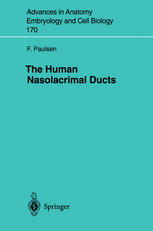

Most ebook files are in PDF format, so you can easily read them using various software such as Foxit Reader or directly on the Google Chrome browser.
Some ebook files are released by publishers in other formats such as .awz, .mobi, .epub, .fb2, etc. You may need to install specific software to read these formats on mobile/PC, such as Calibre.
Please read the tutorial at this link: https://ebookbell.com/faq
We offer FREE conversion to the popular formats you request; however, this may take some time. Therefore, right after payment, please email us, and we will try to provide the service as quickly as possible.
For some exceptional file formats or broken links (if any), please refrain from opening any disputes. Instead, email us first, and we will try to assist within a maximum of 6 hours.
EbookBell Team

0.0
0 reviewsThe human nasolacrimal ducts are a borderland of both disciplines opthalmology and otorhinolaryngology which work closely together in the tretament of nasolacrimal disorders. The author summarizes recent advances about the nasolacrimal ducts and discusses them in a context with nasolacrimal duct pathophysiology. As a draining and secretory system the nasolacrimal ducts play a role in tear transport and non-specific immune defense. Moreover, components of tear fluid are absorbed in the nasolacrimal passage and are transported into a surrounding vascular system. This system is comparable to a cavernous body which is subject to vegetative control. Organized mucosa-associated lymphoid tissue (MALT) is present in the nasolacrimal ducts displaying the cytomorphological and immunophenotypic features of MALT. The normally constant absorption of tear fluid components into the blood vessels of the surrounding cavernous body that are connected to the blood vessels of the outer eye could be a feedback signal for tear fluid production, which comes to a halt if these tear components are not absorbed. Thus, dry eye could be initiated. Defective stimulation of tear duct-associated lymphoid tissue could result in abnormal immune deviation at the ocular surface leading to an autoimmunological response that causes dry eye pathology. Moreover, malfunctions in the cavernous body and in its innervation may lead to disturbances in the tear outflow cycle, ocular congestions or total occlusion of the lacrimal passage. Based on the findings the pathomechanism of primary acquired dacryostenosis can be explained.